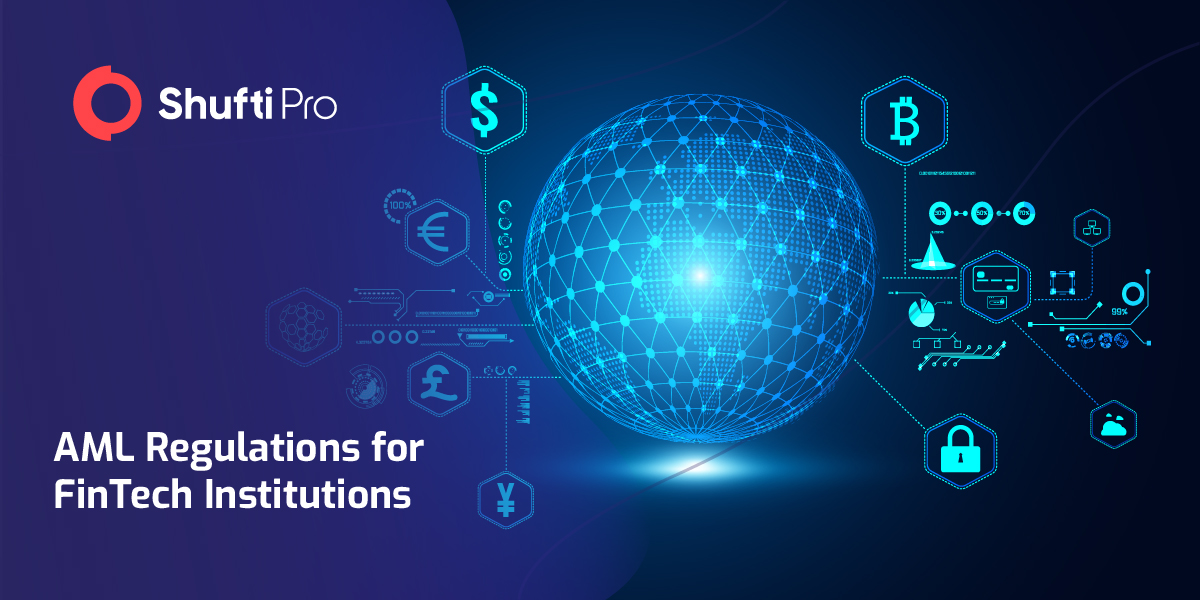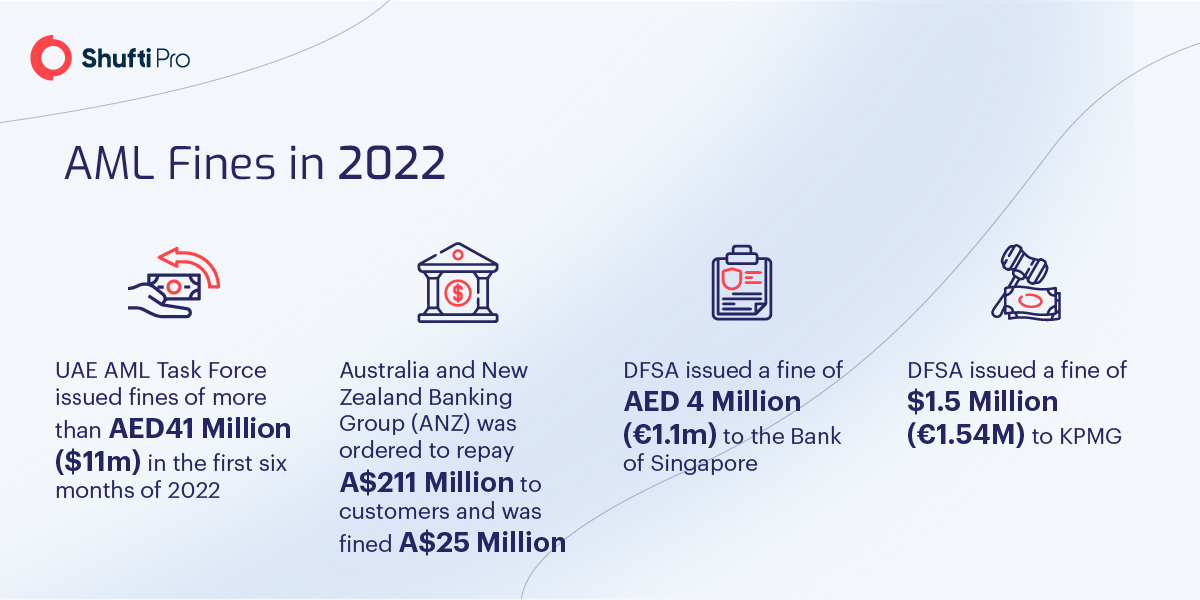AML Compliance in the FinTech Industry’s Uncertain Regulatory Landscape

Financial technology (FinTech) exists to improve and automate the delivery of economical services to help business owners and companies. Customers enhance their financial operations utilising specialised algorithms used on computers. To reduce financial crime, regulators legislated laws and regulations to shield financial organisations from money laundering. The FinTech sector needs to adhere to the regulations to avoid reputation losses and penalties.
Taking global financial services to the next level, the FinTech industry is expanding at a CAGR (Compound Annual Growth Rate) of 6%. Modes of payment have vastly changed with the existence of FinTech. Anyone can utilise services like swipe, WePay, Venmo, etc for quick transactions.
With the existence of innovative transaction methods, AML practices are being used globally. Anti-money laundering requirements are inflicted on financial businesses to fend off tricksters from screening their laundered money from facing compliance sanctions. AML compliance can also automatically report suspected fraud activities to relevant authorities.
Contemporary AML Challenges in the FinTech Industry
Despite continuous improvement in the AML approach, the FinTech sector faces severe monetary losses. Firms that fail to intercept money laundering are more prone to losing customer trust and cause brand reputation damage. To fend off difficulties in managing AML risks, global rules are set by the Financial Action Task Force (FATF).
Common AML challenges include:
Lack of Competent Personnel: Skilled AML professionals are required to govern and tackle fraud challenges in the FinTech industry. Employees must stay informed of progressing regulatory responsibilities. Attention to detail, critical thinking skills, organisational skills, adaptability, and computer literacy are the most valuable skills that an AML personnel must have.
Highly Demanding Governance: Directing multi-departmental AML adherence standards and customer conscientiousness needs may be challenging for FinTech organisations. Figuring clear ownership to sort out AML insufficiency revealed by compliance assessments is a delicate task that needs proper attention.
Complex Technology: To resolve money laundering issues, AML compliance involves different processes to incorporate KYC data and systems. The risk of monetary loss is high during onboarding exchanges depending on the customer’s transaction. FinTech departments must assess the risk and regulate them properly. Since such regulation is quite complex, it requires the consistent observation of customers’ transactions.
FinTech Money Laundering Risks
FinTech institutions should recognize and report money laundering or terrorist financing risks that may evolve with the use of emerging technologies. Financial institutions must thoroughly assess the potential risk before launching new products, developing innovative technologies, or advancing other business practices. Suitable precautionary measures must be taken to alleviate all the viable risks. This can be ensured by designing AML controls to comply with the respective AML regulations of each country.
Customer Negligence: Sometimes obtaining customers’ names, addresses, and other personal information becomes difficult during remote onboarding and is considered one of the potent risks contributing to money laundering. To decrease monetary theft, FinTechs must employ instantaneous Customer Due Diligence (CDD) solutions. Client information should be perpetually updated through databases to disclose false information and unwanted customers.
Illicit Screening: Abandonment of AML screening tools can pose a potential risk to the FinTech sector. FinTechs must employ tools to detect or reject customer sanctions internationally. AML risks can be greatly reduced once sanctioned and politically exposed individuals are identified.
FinTech Transaction Ignorance: FinTech transaction monitoring is essential to detect suspicious or fraudulent money exchanges. Transactions being through a FinTech solution should be carefully monitored to prevent money laundering.
Compliance Regulations in FinTech Industries
Financial regulations continue to strengthen as new services develop. New laws are established internationally by governments and regulatory bodies to clamp down on fraudulent activities.
FinTech compliance regulations are supposed to direct financial service laws and ensure customers’ security. Rules and regulations vary from region to region but work with the same objective to maintain the integrity of the financial market, protect customers from crimes and regulate the FinTech sector.

US FinTech Regulations
One of the most competitive and evolving FinTech markets is the US. To keep track of the growing financial sector, the US follows traditional and newly established regulations to hamper all sorts of FinTech crimes. Some of the main FinTech regulators in the US are:
Financial Crimes Enforcement Network: FinCEN analyzes the collected data about FinTech transactions to identify national and international crimes such as terrorist financing.
Financial Industry Regulatory Authority: An American sector that works interdentally as a self-regulatory organisation for the FinTech industry to control exchange markets and broker firms.
U.S Securities and Exchange Commission: SEC is in charge of securities brokers, investment advisors, and funds to facilitate equitable dealing and prevent fraud.
FinTech Money Laundering Fraud
Ever since the existence of the FinTech industry, a series of fraudulent activities have been actualised, such as money laundering and identity theft. The complexity of these crimes depends on the trickster’s sophistication and can either be easily identified or skip AML monitoring systems.
- Social Engineering Scam Despite taking all sorts of preventive measures,
social engineering scams are contemplated as one of the most sophisticated frauds that the financial sector is facing. It involves using planned emails, social media, phone calls, or other means of communication to trick the victims into handing over private financial details. A study conducted in Poland in 2022 reported that 29% of such fraudulent cases were through email.
- Payment Fraud Attack: Fraudsters steal the financial credentials of others and use them to make illegal transactions. In 2021, accelerated growth of 70% is marked in FinTech. Most of these attacks were aimed at BNPL (Buy Now/Pay Later) services. 49% of survey participants report being victims of payment abuse.
- Synthetic Data Fraud: Synthetic identity fraudsters use a blend of fake and authentic stolen security numbers to generate false recognition to apply for a credit card. In the US, payment losses due to synthetic credit card fraud were expected to increase to $1.26 trillion in 2020.
Final Thoughts
An advanced sector like FinTech needs equally modern fraud monitoring solutions. AML screening provides institutions operating in the FinTech sector with a tool to filter out financial criminals. It covers over 150 different languages and is available in over 230 countries and territories. Shufti’s AML solution has access to 3000 ID document types and screens customers against over 1700 global watchlists, which are updated every 14 minutes.
Shufti’s identity verification solution is PCI certified to ensure the security of customer data from any theft risks, third-party accountability, or government charges. Shufti aims to ensure fraud-free transactions in the FinTech sector by eliminating bad actors during onboarding.
Would you like to learn more about AML solutions for the FinTech industry?










